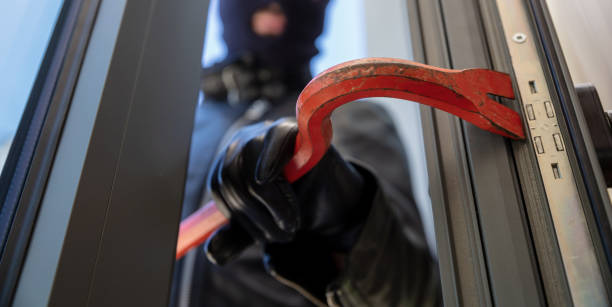
Experiencing a break-in is a deeply unsettling event. The violation of your personal space, the potential loss of valuable possessions, and the feeling of insecurity can be overwhelming. Beyond the emotional impact, the immediate aftermath often involves dealing with physical damage, particularly to your locks.
A damaged lock after a break-in is more than just an inconvenience; it’s a vulnerability that needs to be addressed swiftly and effectively. This comprehensive guide will walk you through the essential steps to take after discovering a damaged lock following a break-in, ensuring you secure your property and begin the process of recovery.
Before anything else, your safety and the safety of anyone else present are paramount. If you suspect the intruder might still be on the premises, do not enter. Instead, immediately contact the police from a safe location. Explain the situation clearly and concisely, providing them with as much detail as possible. Even if you’re unsure whether the intruder is still present, it’s always best to err on the side of caution and let law enforcement handle the situation. Your safety is not worth the risk.
Once the police have arrived and secured the scene, they will conduct an investigation. This process is crucial for a number of reasons:
Be prepared to provide the police with a detailed account of what you observed, including any missing items or damage beyond the lock itself. The more information you can provide, the better equipped they will be to investigate.
Once the police have completed their initial investigation, you can begin to assess the damage to your locks. Carefully examine each affected lock, noting the type of damage:
Take photos or videos of the damage as documentation for your insurance claim. This visual evidence will be invaluable when communicating with your insurance company.
Before you can have your locks professionally repaired, you may need to take temporary measures to secure your property. This is particularly important if the damage is extensive or if you cannot get a locksmith immediately. Here are some temporary solutions:
These temporary measures are not a long-term solution, but they can provide a sense of security until you can have your locks properly repaired.
The most crucial step in dealing with a damaged lock after a break-in is to contact a professional locksmith. A qualified locksmith has the expertise and tools to properly assess the damage, repair or replace the lock, and ensure your property is secure. They can also offer advice on upgrading your security to prevent future break-ins.
When choosing a residential locksmith, consider the following factors:
If you are in Perth, Australia, and need a reliable and experienced locksmith after a break-in, we highly recommend contacting Amco Locksmith. They provide fast, efficient, and professional locksmith services and are dedicated to restoring your security and peace of mind. You can reach them at [Insert Phone Number and Website/Contact Information Here].
A professional locksmith will be able to:
After securing your property and contacting a locksmith in Perth, you should contact your insurance company as soon as possible to file a claim. Provide them with the police report, photos or videos of the damage, and any other relevant documentation. Your insurance policy may cover the cost of repairing or replacing your locks, as well as any other damage caused by the break-in.
Be prepared to answer questions about the break-in and provide details about your insurance policy. The more information you can provide, the smoother the claims process will be.
After the immediate aftermath of the break-in, take some time to review your overall security measures. This is an opportunity to identify any vulnerabilities and make improvements to prevent future break-ins. Consider the following:
Taking these steps can significantly reduce your risk of future break-ins and provide you with greater peace of mind.
The cost of replacing a lock after a break-in can vary depending on several factors, including the type of lock, the extent of the damage, and the locksmith’s rates. It’s best to get a quote from a professional locksmith after they have assessed the damage.
While you may be able to temporarily repair a lock yourself, it’s generally recommended to contact a professional locksmith. They have the expertise and tools to ensure the lock is properly repaired or replaced and that your property is secure. Attempting to repair a damaged lock yourself could compromise its security and leave you vulnerable to further break-ins.
There are several steps you can take to prevent future break-ins, including upgrading your locks, reinforcing your doors and windows, installing a security system, improving lighting, and being vigilant about your surroundings. Consulting with a security professional can also provide valuable insights and recommendations.
If you suspect someone is trying to break into your home, your safety is the top priority. Do not confront the intruder. Instead, immediately call the police from a safe location and provide them with as much information as possible. If you can safely do so, try to observe and note any details about the intruder, such as their appearance, clothing, and vehicle.
Dealing with a damaged lock after a break-in can be a stressful experience, but by following these steps, you can secure your property, begin the recovery process, and take steps to prevent future incidents. Remember, your safety and security are paramount. Don’t hesitate to reach out to professionals like the police, insurance companies, and qualified locksmiths like Amco Locksmith in Perth for assistance at 08 9444 2089 and take the first step toward a safer home.
Locksmiths Jobs